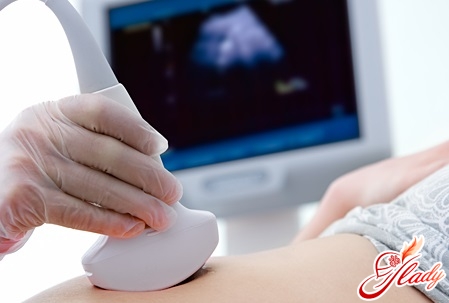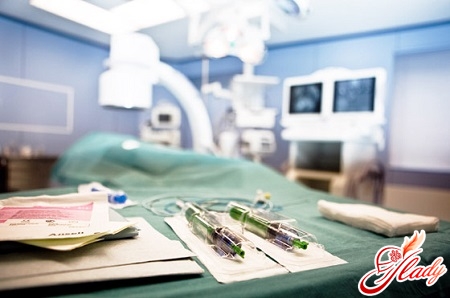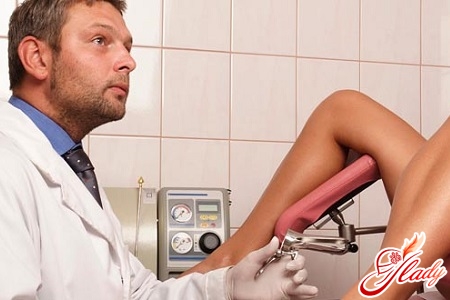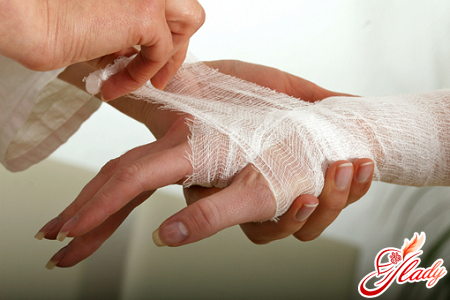
Quite often in women of reproductive ageage, questions arise regarding the possibility of pregnancy with uterine fibroids or after surgery to remove them. It is very important to make the right decision regarding the tactics of managing each specific patient. Are uterine fibroids and pregnancy compatible? Fibroids are a benign tumor consisting of muscle tissue. They occur when the muscle cells of the uterus begin to actively divide. Doctors have not yet fully clarified why this happens, but the most likely cause is hormonal stimulation and increased secretion of estrogens.
Is it possible to become pregnant with a uterine myoma?
The answer to this question depends on many factors that need to be taken into account:
- Localization of the myomatous node
If the myomatous node is localized inthe cavity or wall of the uterus in such a way that the cavity is deformed, or on the cervix, in which case pregnancy is physiologically impossible. Nodes of such a location act as a spiral, are a kind of contraceptives. Sperm simply remain on the surface of these nodes and do not reach the fallopian tubes. Consequently, the egg and sperm do not meet. Such nodes should be removed! With small sizes of myomatous nodes and location in the wall of the uterus itself or outside (subserous localization), in the absence of deformation of the cavity, pregnancy can occur under other satisfactory conditions. In the case of the described nodes, pregnancy can be planned. In the future, problems are still possible, they can be associated with gestation, but their frequency, according to statistics, is about 15-20%. If there is a node with a thin stalk, during pregnancy there is a risk of torsion, this will lead to emergency surgery and a possible termination. If you are preparing to become a mother, such nodes should be removed in advance.
- The tendency of fibroids to grow
If the results of ultrasound and observations indicate a myomagrows rapidly, i.e. increases in size by 1.5-2 times over a period of six months, then planning a pregnancy with uterine fibroids is impossible. In this case, there is a high risk of fibroid growth during gestation, the possibility of a disruption in the nutrition of the fibroid node appears, the risk of miscarriage increases. In this case, it is necessary to carry out surgical treatment beforehand.
- Size of fibroids
If the fibroid is large (the size of the uterusexceeds 10-12 weeks of pregnancy, and in the case of IVF if the fibroid is larger than 4 cm), you should not plan a pregnancy, there is a high probability of miscarriage and the development of malnutrition during gestation, which can lead to emergency surgery. And the onset of pregnancy in this case is unlikely, since in 60-70% of such patients there is pathology of the endometrium, which makes implantation of the embryo impossible. Does uterine fibroid grow during pregnancy? It is not possible to predict the "behavior" of fibroids during this period. This is a genetically determined factor. According to statistics, 65-75% of nodes decrease by about 30%, but 25-35% of fibroids during pregnancy can grow, and very rapidly, and, as a rule, the increase is 100%.
How to remove fibroids during pregnancy planning?
The question of the method of surgical intervention inin the case of uterine fibroids is quite complicated. Laparoscopy, on the one hand, has more advantages, the main one being a decrease in the likelihood of developing adhesions in the pelvis. Subsequently, this will help maintain patency in the fallopian tubes, which is an important factor in fertilization of the egg. With laparotomy, the likelihood of adhesions is significantly higher, and their appearance becomes possible both in the pelvis and in the abdominal cavity. In the future, this will lead, in addition to infertility, to complications in the gastrointestinal tract. However, on the other hand, it is believed that in the case of large fibroids, when performing laparoscopy it is not always possible to suture the uterus in the right way. This is associated with the laparoscopic technique. The quality of healing of the suture on the uterus may vary in different patients and depends on several factors:
So, the most optimal (maximum)the size of the nodes for possible laparoscopy for a patient planning to become pregnant is 5-6 cm. In this case, suturing requires special skill from the surgeon. In the case of large nodes, new technologies have already been developed for suturing the uterus, which allow strengthening its walls, but the risk of uterine rupture along the scar in this case is always higher. In the presence of nodes larger than 9-10 cm, the risk of rupture along the scar is higher than the risk of adhesions after laparotomy. Here, surgeons, as a rule, refuse laparoscopy and perform laparotomy, taking into account the reproductive wishes of the woman. The frequency of adhesions after laparoscopy is significantly lower than with laparotomy. But with large myomatous nodes, endometriosis and inflammation of the appendages, genetic features in the postoperative period, there is a risk of re-development of the adhesion process. According to statistics, the probability of adhesions is higher when the myomatous node is localized in the uterus on the back wall. The reasons for this fact are currently unclear. If there are concomitant pathologies (chlamydia, endometriosis, gonorrhea, etc.) in patients who are interested in pregnancy, a control laparoscopy is performed approximately 6-8 months later to assess the condition of the fallopian tubes. The issue of repeated surgery is always decided individually, taking into account many factors and individual characteristics. After laparotomy for the removal of a large myoma, due to the high probability of adhesions, a control laparoscopy is performed in most cases to restore the patency of the fallopian tubes.
When can I get pregnant after the operation?
After surgery to remove fibroids, regardless ofmethod (laparotomy or laparoscopy), you can get pregnant in 8-12 months, this depends in most cases on the size of the removed node. With small sizes (3-4 cm), you can plan a pregnancy in eight months. Such restrictions are associated with the physiological characteristics of the restoration of the uterine muscles. The absorption of the sutures on average ends completely only 90 days after the operation. Considering that the size of the uterus during pregnancy increases significantly, the muscles stretch and hypertrophy very strongly, it is necessary for the scar to heal completely. Indications for a cesarean section after such an operation are determined individually each time and depend on the size of the fibroid that was removed, since this affects the size of the scar, its previous localization, concomitant indications (age of the pregnant woman, duration of infertility treatment, presence of gestosis), from the ultrasound data of the suture during pregnancy. In general, if a fibroid of up to 3-4 cm is removed, there are no complications, the woman is young, and the condition of the scar is satisfactory according to ultrasound data, natural childbirth is possible.
Rupture of the uterus and multiple myoma
After undergoing surgery to remove myoma,after a previous cesarean section, in any case, if there is a scar on the uterus, there is a chance of its rupture during pregnancy. According to some data, the frequency of ruptures is about 6%, but this is not an exact figure. The probability of rupture is quite difficult to determine, since it is determined by the individual characteristics of the tissues of the muscles of the uterus, it is almost impossible to estimate them. Patients with a scar on the uterus need a more careful attitude during pregnancy management, it is necessary to constantly evaluate the blood flow in the scar, its condition, a timely developed birth plan, early hospitalization before childbirth, etc. In most cases, myoma is represented by several nodes. The situation with pregnancy planning with multiple myoma is quite complicated. In some cases, several nodes of different sizes are localized in the uterus, and if they are all removed, there may be practically no healthy tissue left. In these cases, only those myomatous nodes that interfere with pregnancy are removed, i.e. localized in such a way that they interfere with the attachment of the embryo, or those nodes that tend to grow quickly. After childbirth, the remaining nodes can be removed or removed by cesarean section. It is not advisable to remove all myomatous nodes when planning and preparing for pregnancy in the case of a large number of them, since this can negatively affect the very possibility of becoming pregnant, carrying a child, and the course of labor.









